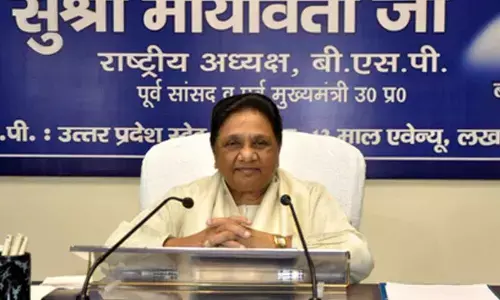Unexpectedly Severe Headaches Could Be a Sign of a Stroke

All of us have experienced throbbing headaches in the past, especially since our consumption of media, entertainment and information through a screen has increased ten fold. We often experience symptoms such as sensitivity to light and sound, or extreme nausea and weakness.
However, it is very important to realise that these symptoms aren't just signs of an oncoming migraine. They could also be loud alarms indicating the onset of a stroke. Hence, understanding the difference between a terrible headache and stroke could be life saving.
Headaches vs Strokes
Here's a quick breakdown of the fundamental differences between the nature of a headache and that of a stroke.
Headache | Stroke |
● Throbbing behind the eye or on one side of the head ● Sudden confusion ● Numbness ● Weakness ● Blurred vision | ● Slurred speech ● Difficulty with balancing the body ● Sudden headache and confusion ● Numbness ● Weakness ● Blurred vision |
Types of Strokes
There are two kinds of strokes: ischaemic and haemorrhagic. Let's understand the difference between both types of strokes.
● Ischaemic Stroke
An Ischaemic Stroke is led by blockages caused by a blood clot in an artery that leads to the brain. The blood clot leads to a build-up of plaques which damages the arteries. This can occur in the artery in the next, called the carotid artery, or other arteries as well. Ischaemic Stroke is the most common kind of stroke.
● Haemorrhagic Stroke
The Haemorrhagic Stroke can be fatal. This occurs when a blood vessel in the brain ruptures and bleeds out. This disturbs the normal blood circulation and blood flow in the brain, depriving the brain of adequate amounts of blood. This can starve the brain of oxygen leading to a full-blown stroke.
Signs of a Stroke You Should Watch Out For
The common link between an Ischaemic Stroke and a Haemorrhagic Stroke is a headache. Hence, it is vital to know which headache could be a common migraine or a terrible stroke.
That Which Was a Headache But Isn't Anymore
The headache that comes at the beginning of a stroke usually has no explanation. You can't blame such headaches on screen-exposure or exhaustion since such headaches aren't caused by external stimulation.
The most common type of stroke starts from the carotid artery, where a blockage prevents blood flow to the brain. The lack of blood circulation and oxygen supply could cause a headache that can develop within seconds or minutes. A headache which leads to a stroke usually causes the individual to lose their sense of touch or vision (in one or both eyes).
Moreover, your headache could indicate where exactly in your brain is the stroke occuring. For example, a stroke-inducing blockage in the carotid artery, which is in the neck, could cause a splitting headache on the forehead. Similarly, a stroke site in the back of the head would be lead by a headache in the very same region.
Sure-fire Stroke Symptoms
These are the symptoms you will experience if that common headache doesn't seem so common anymore. It could be a stroke. Hence, watch out for the following signs.
You must be aware of the FAST rule of stroke. It stands for face, arms, speech and time. Here's how you can use this rule to save your life and someone else's.
● Face: The facial muscles on one side will have loosened to the point of being seemingly dropped
● Arms: Due to weakness, numbness or an immediate break in sensory-motor connection, you will find it difficult, sometimes impossible, to lift both arms
● Speech: Due to lack of adequate neuromuscular control and functioning, you will experience slurring of speech and an inability to understand anyone else's words or actions
● Time: Step four is the time to call an ambulance to acquire adequate emergency medical care
A Quick Wrap-Up
With neurovascular diseases and ailments becoming commonplace, it is crucial for you to look after yourself. Moreover, it is vital to keep an eye out for any signs or symptoms of such conditions since they can be life threatening in many cases. What you might think is a headache brought on by staring at your workplace system for too long could be a major stroke. For the sake of yourself and of your loved ones, educate yourself on such issues. Identifying these signs early on and taking the right measures can save a life.
Your best bet here at managing the situation efficiently to avoid a crisis in case of stroke-related eventualities would be health insurance. Most health insurance plans cover stroke treatments and hospitalisation, offering your full coverage or the option of copay in health insurance. Either way, be it complete or partial, health insurance coverage will always have your back in the event of an unfortunate stroke.














